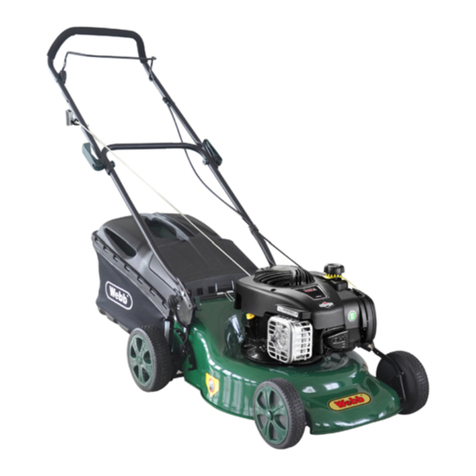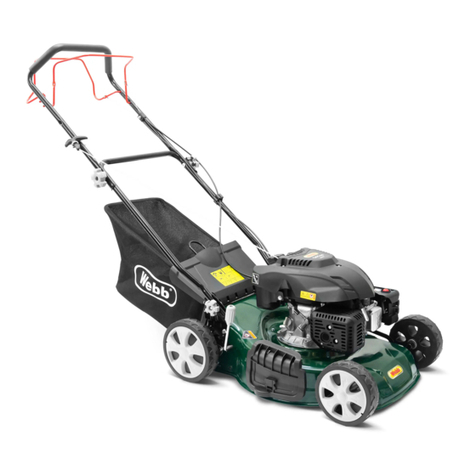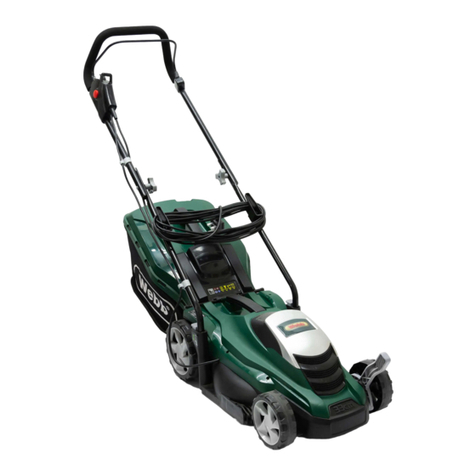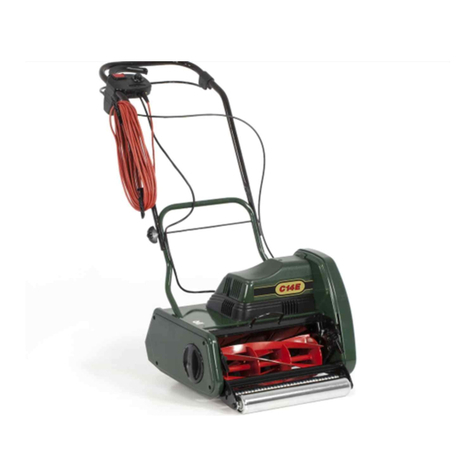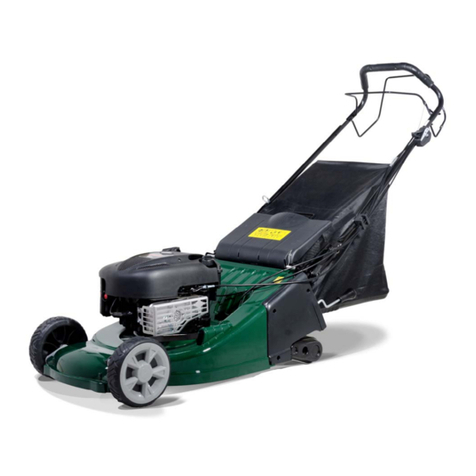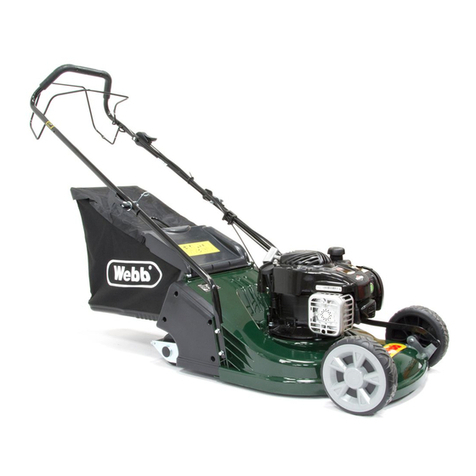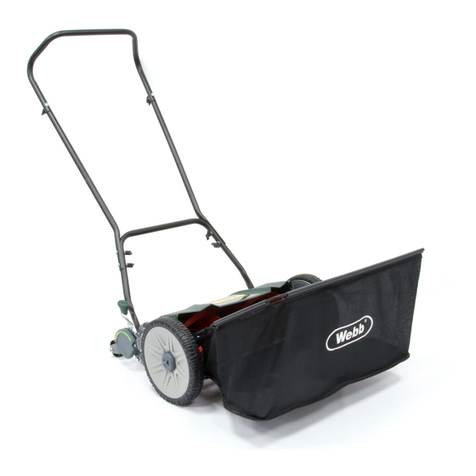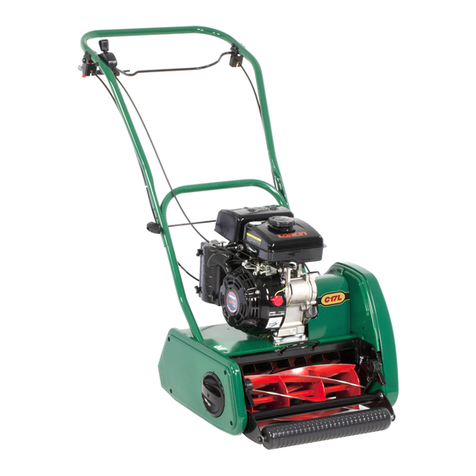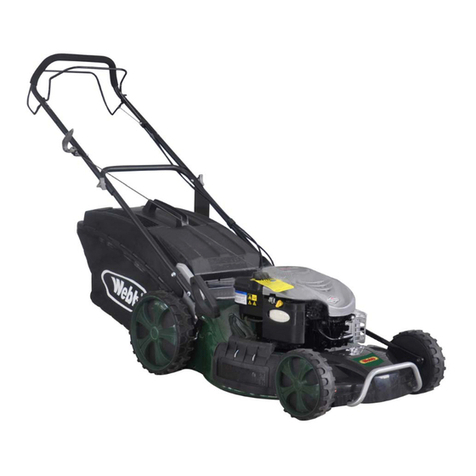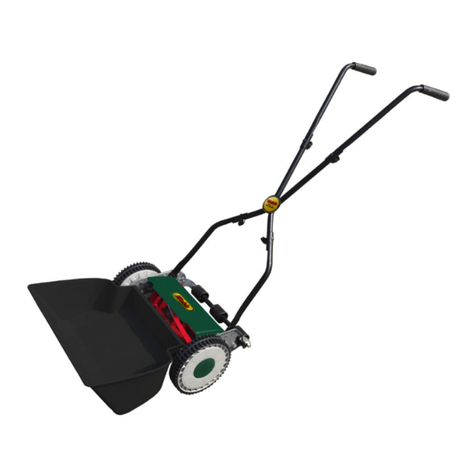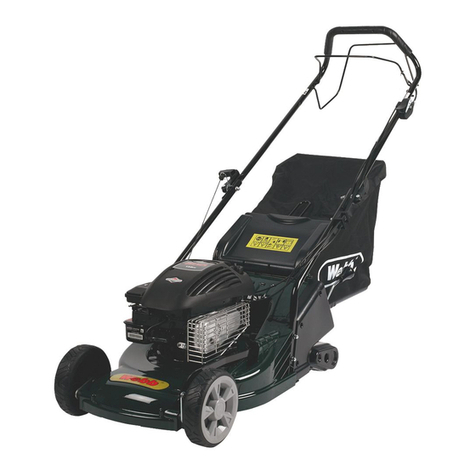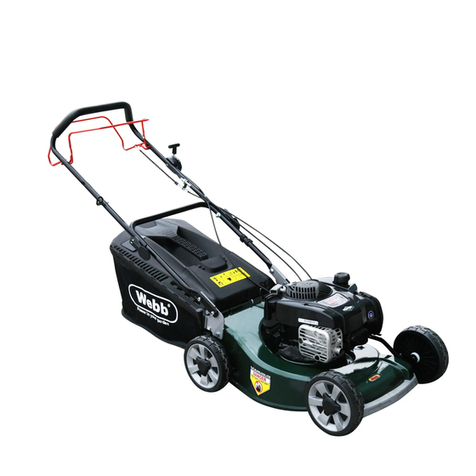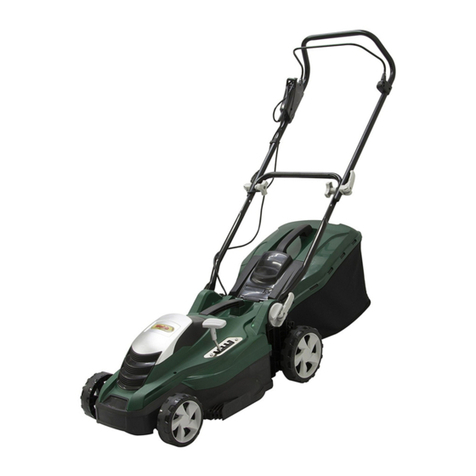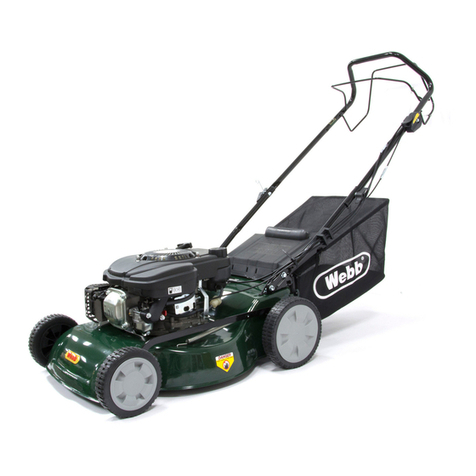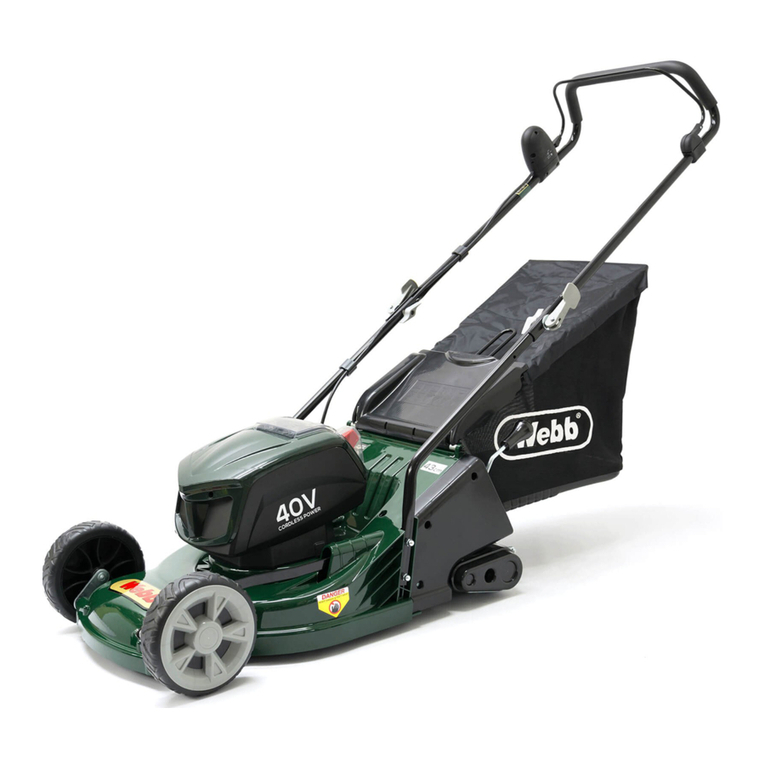
§
Make sure the power cable is positioned so that it cannot be damaged by the cutting means and
will not be stepped on, tripped over or otherwise subjected to damage or stress.
§
Never pick up or carry the product by the electric cable.
§
Never pull by the power cord to disconnect from the power supply.
§
Keep the power cord away from heat, oil and sharp edges.
§
Make sure voltage is correct for your product. A nameplate on the product indicates the product’s
voltage. Never connect the product to an AC voltage that differs from this voltage.
§
Always ensure the cord from the handlebar to the mower body is never trapped, pinched or
otherwise damaged during assembly or handle folding. Never apply power to the mower if this
cable is damaged. Return to authorised service centre for professional repair.
OPERATION
§ Only operate the mower in daylight or in good artificial light.
§ Avoid operating the equipment in wet grass.
§ Always be sure of your footing on slopes. Exercise extreme caution when changing direction on
slopes. Do not mow excessively steep slopes, which exceed 15°. For wheeled rotary machines,
mow across the face of slopes, never up and down.
§ Never run while using the mower, always walk.
§ Do not pull the mower backwards unless absolutely necessary. Use extreme caution when
reversing or pulling the lawnmower towards you.
§ Stop the blade(s) if the lawnmower has to be tilted for transportation when crossing surfaces
other than grass (such as gravel drives, walks, or roads) & when transporting the lawnmower to &
from the area to be mowed. Never pick up or carry a lawnmower while the electric motor is
running.
§ Never operate the lawnmower with defective guards, or without safety devices, for example
deflectors and/or grass catchers, in place.
§ Do not put hands or feet near or under rotating parts. Keep clear of the discharge opening at all
times.
Stop the motor and disconnect the electrical plug from the power source:
ü before clearing blockages or unclogging the chute;
ü before checking, cleaning or working on the lawnmower;
ü after striking a foreign object inspect the lawnmower for damage and make repairs before
restarting and operating the lawnmower,
ü if lawnmower starts to vibrate abnormally (check immediately).
§ Shut the motor off and wait until the motor and the blade come to a complete stop before
removing the grass catcher.
§ Watch for holes, ruts, or bumps. Tall grass can hide obstacles.
§ Do not mow near drop-offs, ditches or embankments. The operator could lose footing or
balance.
§ Be alert and turn the machine off if children enter the area.
§ Never tamper with safety devices. Check their proper operation regularly.
§ Never attempt to make wheel height adjustments while the motor is running.
PREPARATION
§
Always wear appropriate footwear, such as work boots, and trousers when operating the mower.
Do not operate the equipment when barefoot or wearing open sandals. Always wear safety
goggles or safety glasses with side shields when operating the mower.
§
Thoroughly inspect the area where the equipment is to be used and remove all objects which can
be thrown by the machine.
§
Before using, always visually inspect to see that the blades, blade bolts and cutter assembly are
not worn or damaged. Replace worn or damaged blades and bolts in sets to preserve balance.
§
Only use accessories approved by the manufacturer.
§
Do not operate the machine while under the influence of alcohol or drugs.
§
Never operate the machine in wet grass. This could cause you to slip while mowing.
ELECTRICAL SAFETY
§
Power plugs must match the outlet. Never modify the plug in any way. Do not use any adapter
plugs with earthed (grounded) power tools. Unmodified plugs and matching outlets will reduce risk
of electric shock.
§
Avoid unintentional starting. Always check that the switch is in Off position before plugging in the
product to the power supply. Do not carry a plugged in product with your finger on the switch.
§
Avoid body contact with earthed or grounded surfaces, such as pipes, radiators, ranges and
refrigerators. There is an increased risk of electric shock if your body is earthed or grounded.
§
Do not expose the product to rain or wet conditions.
§
Water entering an appliance will increase the risk of electric shock.
§
Electrical power should be supplied via a residual current device (RCD) with a tripping current of
not more than 30 mA.
§
Before use, check the supply and extension cord for signs of damage or aging. If the cord
becomes damaged during use, disconnect the cord from the supply immediately. Do not touch
the cord before disconnecting the supply. Do not use the product if the cord is damaged or worn.
§
If you need to use an extension cable, ensure it is suitable for outdoor use and has a current
capacity rating, sufficient to supply your product. Check it before every use for damage, always
uncoil it completely, during use because coiled cables can overheat. Damaged extension cables
should not be repaired; they should be replaced with an equivalent type.
WEER33 Instruction Manual.indd 7 20/10/2016 14:11
